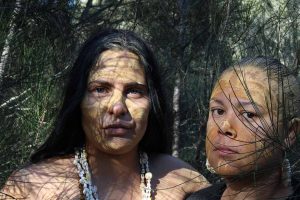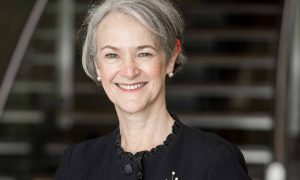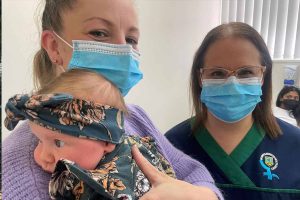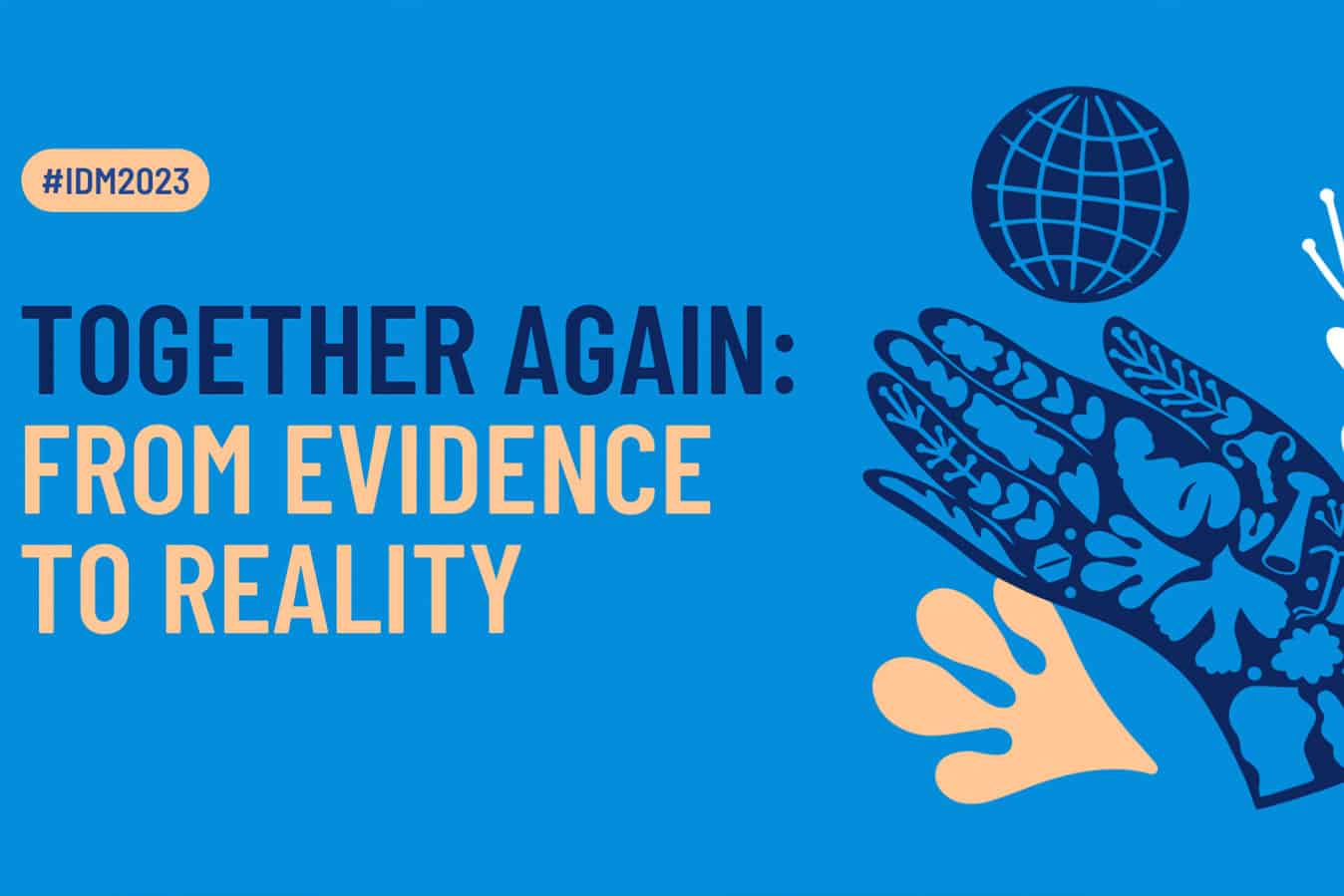Each year, the International Confederation of Midwives (ICM) lead global celebrations for International Day of the Midwife (5 May).
This year’s IDM theme is ‘Together again: from evidence to reality’, with ICM acknowledging its upcoming 33rd ICM Triennial Congress, where the global midwife community will come together for the first time in more than five years. The theme also honours the efforts of midwives and professional associations to action critical evidence such as the State of the World’s Midwifery (SoWMy) 2021 report, which can lead towards meaningful change for the profession and women and families.
To celebrate International Day of the Midwife, the ANMJ shines the spotlight on inspirational midwives making a difference across the country.
Melanie Briggs, Senior Midwife at Waminda South Coast Aboriginal Women’s Health and Welfare Corporation and manager of the Minga Gudjaga Birthing on Country program
A descendant of the Dharawal and Gumbaynggirr people, midwife Melanie Briggs runs the Minga Gudjaga (Mother and Baby) child and maternal health program and Birthing on Country at Waminda. The first endorsed Aboriginal midwife in NSW and a BOC advocate, she developed the first Aboriginal-led maternity model of care in Australia.
As an early career midwife, she began working in the community with Aboriginal families.
“I wanted better outcomes for our mothers and babies and you achieve that by providing good quality services that the women will access and want to access,” Melanie recalls.

Aboriginal-led and community controlled, Melanie is the heart of the maternity services offered by Waminda. Birthing on Country is a continuation of thousands of years of knowledge and practice, which provides holistic maternal, child and family healthcare that embeds cultural integrity and safety during pregnancy, labour, birth and postnatal care.
Last October, the federal budget granted Waminda funding to undertake a landmark project to build Australia’s first Indigenous Birthing on Country centre in Nowra.
“It’s not only maternity, it’s everything that encompasses the woman and that baby in the first 1,000 days of life,” says Melanie.
“It’s pre-conception, pregnancy and up to school age. It’s everything to make sure that that woman has the best possible health before she even becomes pregnant and then when she is pregnant receives the best quality care by a known midwife in community. That then sets that baby up for a long, healthy, thriving life. Born into a wealth of health.”
Melanie says the Birthing on Country model embedded within Waminda’s broader model of care is helping improve maternal, infant and child health, and empowering Indigenous women to have more control over the birth of their babies.
“It connects you to the land. It’s about power and strength. It’s also about incorporating language and practices. What that does is it sets up not only that baby for connection to country but connection to mother and family. It’s so important for our people.”
Professor Caroline Homer, Co-Program Director Maternal, Child and Adolescent Health, Burnet Institute, and Chair of the Council of the National Health and Medical Research Council (NHMRC)
One of the world’s leading midwifery researchers, Professor Caroline Homer has more than 30 years of experience as a clinician, educator, researcher and leader.
At the Burnet Institute, her role focuses on improving the quality of midwifery care and health outcomes for women and babies.
Last October, she received a NHMRC Investigator Grant to carry out a five-year project aiming to reduce maternal and newborn deaths and stillbirths by strengthening midwifery in the Asia-Pacific region by supporting improved education, regulation and leadership. Key countries will include Papua New Guinea, Cambodia and Pakistan.
“In Australia and across the world, we talk a lot about the need to strengthen midwifery leadership,” Professor Homer explains.
“But what is that, and how would you do it? And what would a strengthened midwifery leader look like, and what could they do?”

The other big aim of the Investigator Grant is developing an investment case for why countries should invest in midwives.
“All the global documents say invest in midwives,” Professor Homer says.
“But if I’m a Ministry of Health in a country and I’ve got $10 million, what’s the best bang for my buck to improve maternal health? How much should I put into midwifery and midwives, and how much should I put into something else? If we don’t know that, we can’t help governments make those sorts of policy decisions; what do you need to spend to actually strengthen midwifery?”
Professor Homer’s work reflects the global strategy for maternal, child and adolescent health – survive, thrive and transform.
“I’m really interested in mothers and babies surviving, so less stillbirths, less neonatal deaths, less maternal deaths. I’m interested in thriving; it’s not good enough to just survive childbirth, you actually have to do well. We want healthy mothers, thriving midwifery communities, as well as strong midwives that can transform the capacity of women and communities.”
Closer to home, Professor Homer considers the state of midwifery in Australia an “exciting space” with strong recognition of the value of midwives and the need to support education and regulation. Yet, challenges remain, including strengthening the role and flexibility of midwives to provide continuity of midwifery care.
“The two to three years of COVID-19 have put a big strain on the sector. Midwives are tired and they’re burnt out in many settings and they don’t feel as valued as they should be so we really need to spend the next few years rebuilding, refocusing and re-energising the sector.”
Professor Homer’s advice to early career midwives and nurses looking to pivot into research is to be brave, jump in, and importantly, find good mentors.
“Find good people who back you along the way,” she says.
“My other piece of advice is don’t give up the clinical. I only stopped working clinically three or four years ago. Doing clinical, even a tiny bit all the time, is really important because it enables you to see the real world and always keeps your feet on the ground to what the reality is.”
Paula Wells, Clinical Midwife, King Edward Memorial Hospital, WA
In 2016, Paula Wells helped establish a hospital-based Midwifery Group Practice (MGP) model at the King Edward Memorial Hospital in Western Australia.
A Clinical Midwife and MGP Team Leader, Paula has a full-time caseload of 40 women per year and provides antenatal, intrapartum and postnatal care.
Her greatest passion is Midwifery Continuity of Care (CoC), where midwives play a central and reassuring role throughout the journey.
“Women are allocated a primary midwife and get to know that midwife throughout their pregnancy. The midwife is on call for the labour and birth and then follows up with postnatal care when they go home,” explains Paula.

While midwives remain on call, they cannot be available 24/7, which is where the unique group model steps in.
“It’s a small group of midwives that work together. On the days that I’m not working, I have a backup midwife. My client would have met my backup midwife and other midwives within the team, so if they do labour and birth when I’m on a day off or if something comes up; it’s still quite often with a midwife they’ve met before.”
According to Paula, women with access to the model have a 70-80% chance of having a familiar face with them for their labour and birth experience. Benefits include increased satisfaction with pregnancy care, higher vaginal birth rates, and lower complications throughout pregnancy.
In her leadership role, Paula also provides support to early career midwives undergoing their graduate program, and new staff who join the team. She describes the dual nature of the workload, led by caring for women and families throughout their journey, as incredibly rewarding.
Named the 2022 Australian College of Midwives (ACM) Midwife of the Year for her commitment and passion for the profession, Paula remains a strong advocate for wider access to Midwifery Group Practice so that all women have the opportunity to receive continuity of care, especially those with risk factors.








